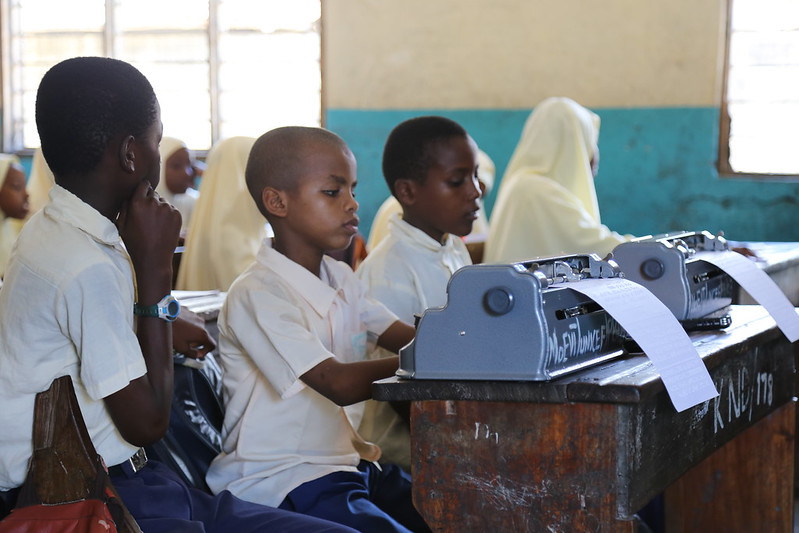How the GPE Is Strengthening Education in Tanzania
 The Global Partnership for Education (GPE) is a “multi-stakeholder partnership and funding platform” that strives to strengthen education systems in developing countries by increasing access to education, improving literacy rates, improving teaching conditions and strengthening nonformal education. According to UNICEF, GPE does this by uniting countries with donors, international organizations, teacher organizations and private-sector foundations and organizations, providing a unique, multi-stakeholder partnership. GPE implements evidence-based policies throughout the country through working with local education groups, intending to provide every child with hope and opportunity. GPE primarily focuses on achieving better learning outcomes for girls in order to promote a gender-inclusive learning environment in countries globally. With these objectives, the GPE plays a significant role in reducing global poverty, considering that education is a proven pathway out of poverty and has immense value in impoverished regions such as Africa. Specifically, the GPE is strengthening education in Tanzania through several focuses.
The Global Partnership for Education (GPE) is a “multi-stakeholder partnership and funding platform” that strives to strengthen education systems in developing countries by increasing access to education, improving literacy rates, improving teaching conditions and strengthening nonformal education. According to UNICEF, GPE does this by uniting countries with donors, international organizations, teacher organizations and private-sector foundations and organizations, providing a unique, multi-stakeholder partnership. GPE implements evidence-based policies throughout the country through working with local education groups, intending to provide every child with hope and opportunity. GPE primarily focuses on achieving better learning outcomes for girls in order to promote a gender-inclusive learning environment in countries globally. With these objectives, the GPE plays a significant role in reducing global poverty, considering that education is a proven pathway out of poverty and has immense value in impoverished regions such as Africa. Specifically, the GPE is strengthening education in Tanzania through several focuses.
The GPE’s Partnership With Tanzania
Since 2013, the GPE has partnered with Tanzania, working closely with UNESCO, to improve the quality of education both on Tanzania’s mainland and in Zanzibar. Total grant support over the past decade exceeds $3 million for Tanzania’s sectors in program development and implementation, sector plan development, COVID-19 relief and system capacity and transformation. These sectors address “persistent challenges, including poor school conditions, teacher shortages and teacher effectiveness, in systemic and sustainable ways.” The grants also go toward programming to increase young girls’ access to education through policies promoting gender equality and inclusion.
GPE-Supported Projects in Tanzania
Aiming to improve three priority reform areas — teacher workforce planning and management, gender equality and inclusion and the teaching and learning environment generally — the Global Partnership for Education has implemented several projects within Tanzania. Pamodzi for Inclusive Education in South-East Africa (PIESEA) focuses on promoting inclusive education policies and increasing public awareness of education policies implemented in Tanzania, as well as Kenya and Malawi.
PIESEA has developed a national strategy for inclusive education in Tanzania, which provides data on inclusive education for policy making, increases funding for inclusive education and increases community demand for an inclusive educational environment. The Global Partnership for Education is also working on a project to strengthen engagement in education planning, policy dialogue and monitoring. Objectives at the launch of the project include:
- Advocating for pregnant girls to be allowed in schools.
- Increasing campaigning for essential education initiatives.
- Increasing the education sector budget to 20% by 2024.
- Monitoring future project implementation and achievements.
GPE’s Achievements Within Tanzania
Since 2013, Tanzania has experienced growth in gender equality within schooling systems through “improved girls’ transition rates from primary to lower secondary school and a recent reversal of a policy banning pregnant girls from attending school.” Removing the ban, which restricted girls who were pregnant from receiving education, was a step in the right direction for GPE within Tanzania, as this was one of their primary policy goals aiming to achieve gender equality. According to a World Bank study from 2020, secondary school enrollment increased from 1.8 million in 2015 to 2.2 million in 2018, a significant success for the education system in Tanzania.
However, 300,000 children in 2018 and 2019 could not receive secondary education due to a lack of space. According to 2020 data, 60,000 children drop out of lower secondary education each year, 5,500 of those children being pregnant girls.
The Global Partnership for Education recognizes that, each year, policies need to be reevaluated and reformed — the current operating model in Tanzania is GPE 2025, which focuses mainly on teacher workforce planning and management as the priority reform, ultimately aiming to achieve increased mobilization efforts for providing education within Tanzania.
– Marisa Kole
Photo: Flickr
